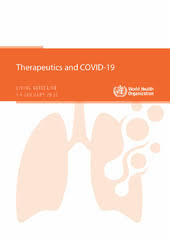XIANGYANG, CHINA – While the overall global burden of alcohol-related cirrhosis (AC) among women saw a decrease between 1992 and 2021, significant disparities persist, with lower socioeconomic regions facing a disproportionately high burden, according to a new study. The research was published online on March 31 in the journal Scientific Reports.
Researchers, led by Zhou Zhang from the Hubei University of Medicine in Xiangyang, China, utilized data from the comprehensive Global Burden of Disease 2021 database to analyze trends in AC among women across 204 countries over nearly three decades. They assessed age-standardized incidence rates (ASIR), mortality rates, and disability-adjusted life-years (DALYs) to understand the impact of the disease.
The study revealed a modest global decline in the ASIR of AC in women, dropping from 3.10 cases per 100,000 in 1992 to 2.42 per 100,000 in 2021. This reflects an estimated annual percentage change (EAPC) of -1.02, indicating a slow but steady downward trend worldwide.
However, this global picture hides significant regional variations linked to the Sociodemographic Index (SDI). In 2021, regions categorized as low SDI experienced the highest incidence rate at 3.77 cases per 100,000 women. Furthermore, while global mortality and DALYs associated with AC in women also decreased during the study period, these health burdens remained substantially higher in lower SDI regions compared to more developed areas.
The analysis also identified distinct gender-specific trends, noting a marked increase in the burden of AC within older age groups among women.
Despite the challenges highlighted in specific regions, the researchers project a continued, albeit potentially slow, overall decline in the global burden of AC among women leading up to the year 2030.
“The burden of AC in women remains a significant global health challenge,” the study authors write. “While some regions have seen improvements, others, particularly lower SDI countries, continue to experience rising incidence and mortality rates.”
The findings underscore the need for targeted public health interventions and policies focused on regions and populations most affected by alcohol-related liver disease, even as global rates show some improvement.
The study, titled “Global, regional, and national burdens of alcohol-related cirrhosis among women from 1992 to 2021 and its predictions,” provides valuable insights into the evolving landscape of this serious health condition.
Disclaimer: This news article is based on information from a study published in Scientific Reports (DOI: 10.1038/s41598-025-95563-0). It is intended for informational purposes only and should not be considered medical advice. Please consult with a qualified healthcare professional for any health concerns or before making any decisions related to your health or treatment.












